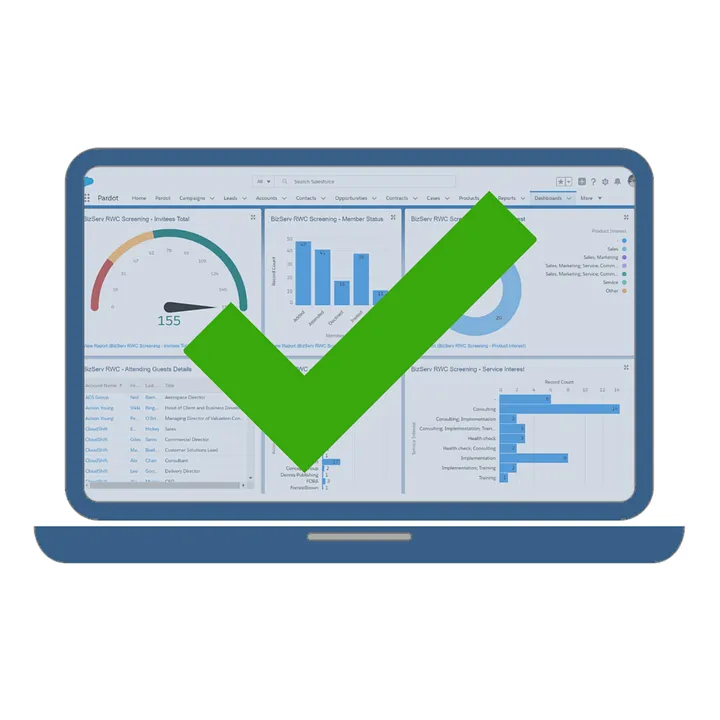In today’s fast-paced business environment, optimizing your Salesforce platform is crucial for staying competitive and achieving long-term success. Whether you’re a seasoned Salesforce user or just getting started, conducting regular health checks is essential to ensure that your system is operating at peak efficiency. In this guide, we’ll walk you through the steps to perform a thorough Salesforce health check, helping you identify areas for improvement and maximize the value of your investment.

Why Conduct a Salesforce Health Check?
Before diving into the specifics of how to perform a Salesforce health check, let’s first understand why it’s important. Just like any other critical system or tool within your organization,
Salesforce implementation requires regular maintenance and evaluation to ensure it continues to meet your business needs effectively. Here are a few reasons why conducting a health check is essential:
Optimization: Over time, your Salesforce instance may accumulate redundant processes, unused features, or outdated configurations that can slow down performance and hinder productivity. A health check helps identify and eliminate these inefficiencies, optimizing your system for peak performance.
Compliance: As regulations and best practices evolve, it’s important to ensure that your Salesforce implementation remains compliant with industry standards and data protection regulations. Regular health checks can help identify potential compliance issues and ensure that your system meets all necessary requirements.
Cost Savings: By identifying and addressing inefficiencies early on, you can avoid costly downtime, performance issues, or unnecessary expenditures on unused features or licenses. A well-maintained Salesforce instance can ultimately save your organization time and money in the long run.
Now that we understand the importance of conducting a
health check in salesforce let’s dive into the steps to perform one effectively.
Step-by-Step Guide to Performing a Salesforce Health Check
Review Org Limits and Usage: Start by reviewing your Salesforce organization’s limits and usage to ensure that you’re not exceeding any thresholds. Check your data and file storage usage, API usage, and limits on custom objects, fields, and workflows. Identify any areas where you’re close to reaching limits and take proactive steps to avoid potential issues.
Evaluate Data Quality: Data quality is critical for ensuring that your Salesforce system provides accurate insights and drives informed decision-making. Use Salesforce reports and dashboards to assess the cleanliness and completeness of your data. Look for duplicate records, missing or inconsistent information, and outdated data that needs to be cleaned up.
Assess Security Settings: Security is paramount in any Salesforce implementation. Review your organization’s security settings, including user permissions, profiles, roles, and sharing settings, to ensure that sensitive data is adequately protected. Look for any potential vulnerabilities or gaps in your security posture and take steps to address them promptly.
Analyze Workflow and Automation: Evaluate your organization’s workflows, process automation, and approval processes to ensure that they’re streamlined and efficient. Look for opportunities to simplify or optimize complex workflows, eliminate redundant processes, and leverage automation tools like Process Builder and Flow to improve productivity.
Check AppExchange Apps and Integrations: If your organization uses third-party apps or integrations from the Salesforce AppExchange, review them periodically to ensure they’re up to date and compatible with the latest Salesforce releases. Check for any deprecated features or unsupported integrations that may need to be replaced or updated.
Review Customizations and Code: If your organization has implemented customizations or custom code within Salesforce, review them carefully to ensure they’re well-documented, maintainable, and aligned with best practices. Perform regular code reviews and testing to identify any potential issues or areas for improvement.
Gather User Feedback: Finally, gather feedback from Salesforce users within your organization to understand their pain points, challenges, and suggestions for improvement. Solicit input from stakeholders across different departments to ensure that your Salesforce system meets the needs of all users effectively.Conclusion:
Conducting a
Salesforce health check is a proactive measure that can help ensure the long-term success and effectiveness of your Salesforce implementation. By following the steps outlined in this guide, you can identify potential issues, optimize your system for peak performance, and maximize the value of your investment in Salesforce. Remember that conducting regular health checks is an ongoing process, so make it a regular part of your organization’s Salesforce maintenance routine to stay ahead of potential issues and keep your system running smoothly.
If you need assistance with performing a Salesforce health check or optimizing your Salesforce implementation, Sol Business Solutions is here to help. Our team of certified Salesforce experts has the knowledge and experience to assist you with all aspects of Salesforce administration, customization, and optimization. Contact us today to learn more about our Salesforce services and how we can help you achieve your business goals.

.png)

Comments
Post a Comment